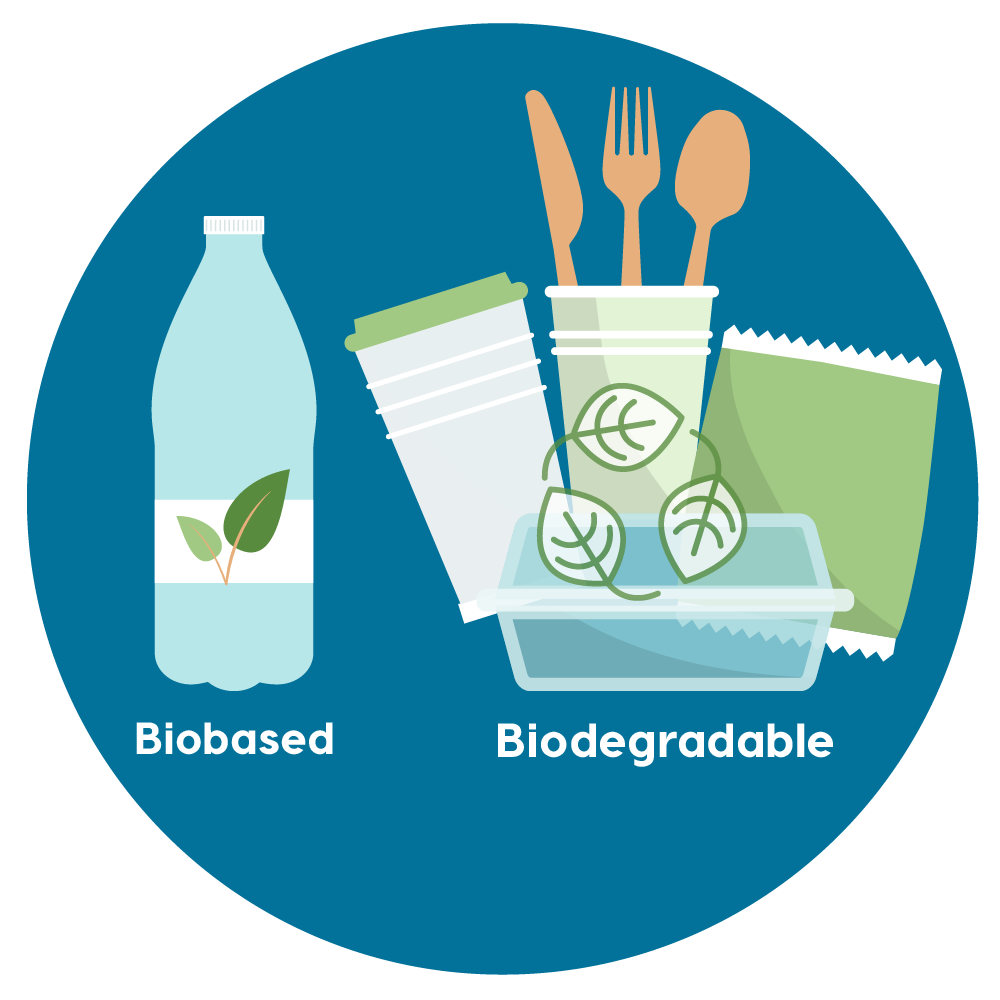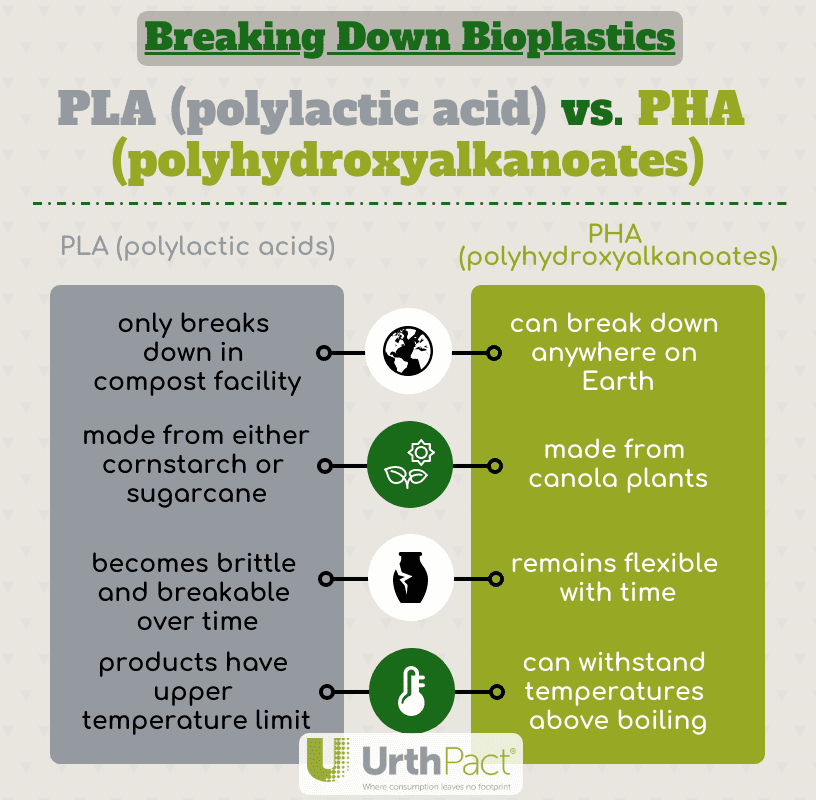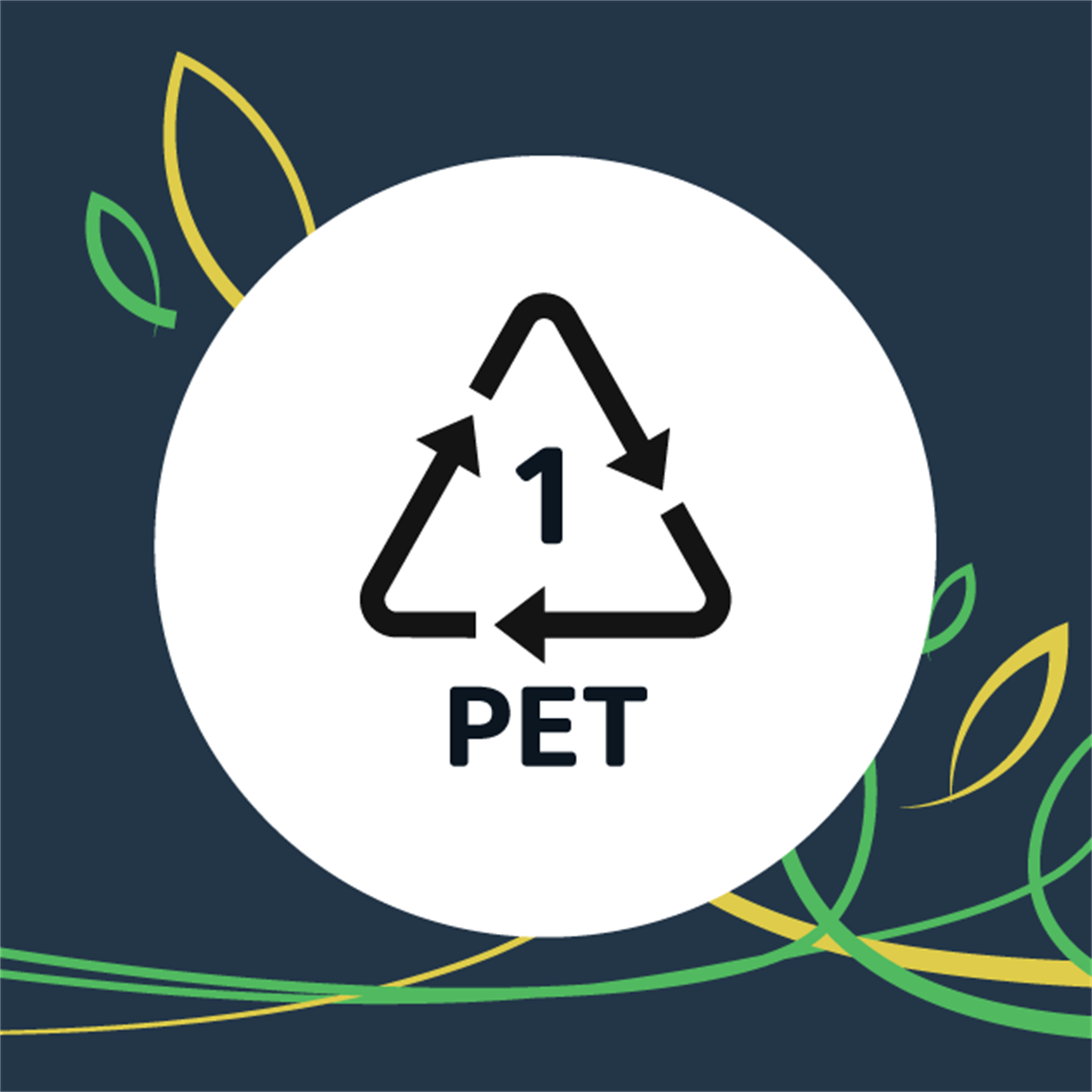Bioplastics are a type of plastic made from renewable biomass sources, such as vegetable fats and oils, corn starch, pea starch, or microbiota. They are an alternative to traditional plastics, which are made from non-renewable fossil fuels. Bioplastics can be biodegradable or non-biodegradable, and their properties can vary depending on the specific material and manufacturing process used. Some bioplastics can biodegrade completely in industrial composting facilities, while others require specific conditions to break down. Since bioplastics are plant-based products, the consumption of petroleum for the production of plastic is expected to decrease by 15–20% by 2025.

Types of Bio-plastics
Bioplastics are a promising alternative to traditional plastics, offering a more sustainable and environmentally friendly solution for a wide range of applications. There are two main types of bioplastics that are commonly used: PLA and PHA.
- PLA, or polylactic acid, is made from the sugars in corn starch, cassava, or sugarcane. This biodegradable plastic is carbon-neutral and edible, making it a versatile and eco-friendly option for a variety of products. To create PLA, corn kernels are broken down into starch, protein, and fiber through a process of immersion in sulfur dioxide and hot water. The starch is then mixed with citric acids to form a long-chain polymer, which can be shaped and molded into various forms. Companies like NatureWorks produce PLA under the brand name Ingeo, which can look and behave like traditional plastics such as polyethylene or polystyrene.
- PHA, or polyhydroxyalkanoate, is made by microorganisms that produce plastic from organic materials. This biodegradable plastic is often used in medical applications such as sutures, slings, bone plates, and skin substitutes due to its compatibility with living tissue. PHA is made by depriving the microorganisms of nutrients like nitrogen, oxygen, and phosphorus, while giving them high levels of carbon. The microbes produce PHA as a carbon reserve, which they store in granules until they have more of the other nutrients they need to grow and reproduce. The resulting PHA has a chemical structure similar to traditional plastics and can be used for single-use food packaging as well.

The global bioplastic market is projected to grow from $17 billion in 2021 to almost $44 billion in 2022. As companies and consumers alike become more aware of the environmental impact of traditional plastics, bioplastics offer a promising solution for a more sustainable future.
Complexities of Bio-plastics:
The use of bioplastics has been touted as a solution to the problem of plastic pollution, but the reality is much more complicated. Despite the best intentions of consumers and small businesses, the issue of bioplastics is not as straightforward as it may seem.

One of the main issues with bioplastics is that they are often marketed as compostable or biodegradable, leading consumers to believe that they will simply break down in the environment. However, the reality is that bioplastics require specific conditions in order to decompose, and may not be suitable for all composting systems. In fact, compostable plastic takeaway packaging was not designed to be the solution to plastic pollution, but rather to prevent food waste from being contaminated with plastic packaging. Small businesses that have made the switch to bioplastic alternatives have also faced challenges, including higher costs and difficulties finding suitable suppliers. Despite these challenges, many businesses are committed to finding more sustainable solutions and reducing their impact on the environment.
Another issue with bioplastics is the lack of clear regulations and standards. There is no universal definition of what constitutes a bioplastic, and some products may be marketed as biodegradable or compostable without meeting specific criteria. This can lead to confusion among consumers and businesses, and make it difficult to ensure that bioplastics are being used in a sustainable and responsible way. Ultimately, the issue of bioplastics is a complex one that requires a nuanced approach. While bioplastics offer the potential for a more sustainable future, it is important to recognize that they are not a panacea for the problem of plastic pollution. Consumers and businesses must educate themselves about the true impact of bioplastics, and work together to find solutions that are both environmentally responsible and economically viable.
Bio-plastics VS Plastics – Which is the better choice ?
Bioplastics are made from renewable resources such as corn starch, sugarcane, and vegetable fats and oils, while traditional plastic is made from non-renewable fossil fuels like petroleum. Bioplastics are also free from harmful chemicals like bisphenols (BPA) or other endocrine-disrupting toxins that can be found in traditional plastic. In terms of environmental impact, bioplastics have several advantages. They generate fewer emissions during production compared to traditional plastic, and they can be composted by industrial facilities, which is an environmentally beneficial way of disposing of waste. This compost can then be used as a resource for growing more plants, creating a circular economy. On the other hand, traditional plastics often end up in landfill or incinerated, contributing to greenhouse gas emissions and pollution. Additionally, the recycling rates for traditional plastics are low, and there are concerns about the safety of recycled plastic for food packaging.

However, there are also some drawbacks to bioplastics. Some types of bioplastics require specific conditions, such as high temperature and pressure, to break down properly. If not disposed of correctly, bioplastics can also contaminate recycling streams, as consumers may mistake compostable bioplastic for recyclable plastic. Furthermore, bioplastics can be more expensive to produce, which can be a burden to the consumer. Ultimately, the choice between bioplastics and traditional plastics depends on the specific application and the end-of-life considerations. While bioplastics have several advantages, there are also limitations and challenges that need to be addressed. As consumers, we can make a difference by choosing to reduce our use of single-use plastics altogether and opt for more sustainable alternatives.
Side Effects
A 2010 study from the University of Pittsburgh compared seven traditional plastics, four bioplastics, and one made from both fossil fuel and renewable sources. The researchers found that bioplastics production resulted in greater amounts of pollutants compared to traditional plastics. This is due to the fertilizers and pesticides used in growing the crops used to make bioplastics and the chemical processing needed to turn organic material into plastic. The bioplastics also contributed more to ozone depletion than the traditional plastics, and required extensive land use.

One hybrid plastic, B-PET, was found to have the highest potential for toxic effects on ecosystems and the most carcinogens, and scored the worst in the life cycle analysis because it combined the negative impacts of both agriculture and chemical processing. Despite these negative impacts, bioplastics do produce significantly fewer greenhouse gas emissions than traditional plastics over their lifetime. There is no net increase in carbon dioxide when they break down because the plants that bioplastics are made from absorbed that same amount of carbon dioxide as they grew. A 2017 study determined that switching from traditional plastic to corn-based PLA would cut U.S. greenhouse gas emissions by 25 percent. The study also concluded that if traditional plastics were produced using renewable energy sources, greenhouse gas emissions could be reduced by 50 to 75 percent. However, bioplastics that might be produced with renewable energy showed the most promise for substantially reducing greenhouse gas emissions. In summary, while bioplastics are a promising alternative to traditional plastics, their production still has some negative side effects that need to be taken into consideration. It is important to continue researching and developing sustainable materials that have the potential to reduce our carbon footprint and minimize harm to the environment.












 Gene cloning, reproductive cloning, and therapeutic cloning are the three basic types of cloning. Gene cloning is the process of making duplicates of genes or DNA segments. Reproductive cloning makes full animal replicas. Embryonic stem cells are created during therapeutic cloning. In order to repair damaged or unhealthy tissues in the human body, researchers want to employ these cells to generate new, healthy tissue. What benefits do we actually gain by cloning organisms with minimal genetic mistake, even if we do succeed in doing so? Some people would have the ability to truly resuscitate their dead relatives or even create new humans, while others are able to bring back to life their deceased pets or dead humans. The first cloned animal as a pet was a cat
Gene cloning, reproductive cloning, and therapeutic cloning are the three basic types of cloning. Gene cloning is the process of making duplicates of genes or DNA segments. Reproductive cloning makes full animal replicas. Embryonic stem cells are created during therapeutic cloning. In order to repair damaged or unhealthy tissues in the human body, researchers want to employ these cells to generate new, healthy tissue. What benefits do we actually gain by cloning organisms with minimal genetic mistake, even if we do succeed in doing so? Some people would have the ability to truly resuscitate their dead relatives or even create new humans, while others are able to bring back to life their deceased pets or dead humans. The first cloned animal as a pet was a cat